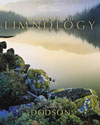
|  |
Book Preface| WHY I WROTE THIS BOOK
This text presents limnology the way I have learned it from my teachers, and especially the way I have experienced it taught at the University of Wisconsin. For the past several decades, the UW limnology course has included about 150 undergraduate students each Fall, and an additional 50 students in the summer. The emphasis of the course is on the broad diversity of topics that make up limnology: the standard chemistry, physics, and biology of water, as well as environmental, management, and conservation topics. There is even room for the occasional poem or story about a beautiful lake or stream. Limnology is taught here as a general science course with both lecture and laboratory experiences. Introduction to Limnology differs from other texts on the subject by having a strong emphasis on ecology, with a distinct liberal arts orientation. FOR THE BEGINNER
This text is written at an introductory level that will appeal to the undergraduate instructor, teaching assistant, and student. If the teacher happens to be a specialist in limnology, the introductory material can easily be supplemented with results of specific research.
Reflecting my own experiences, there are more lake than stream examples, and I have given biology, especially ecology, more emphasis than is traditional in a limnology text. Examples in the text are mostly from North America, but I have made an effort to include selected international examples. (I have not used too many Wisconsin examples. Really.)
The information and ideas in this book will provide the foundation to allow any college student or other citizen limnologist to make informed decisions in specific situations concerning water resource management and protection. This book serves as a step in the education of scientists, environmentalists, naturalists, water resource managers, educators and conservationists. LOGICAL ORGANIZATION
This book begins with a general introduction to the subject matter and the history of limnology. The second chapter is a broad introduction to the physics and chemistry of water, an environment that humans find alien. In the next three chapters (3-5) we meet the major groups of organisms that live in freshwater, from microscopic bacteria to the charismatic megafauna. The sixth chapter focuses on populations and population dynamics of individual species, applying concepts of theoretical and population ecology to limnology. Freshwater communities are treated in two chapters: chapter seven describes examples of freshwater communities and the biological interactions that allow species to sometimes live together in the same habitat, and chapter eight focuses on how communities change. The next two chapters (9, 10) are concerned with ecosystem topics. Chapter 9 focuses on the flow of energy in lakes and streams, both in the habitat (ecosystem), and in individual organisms (physiological ecology). Chapter 10 deals with major aquatic chemical cycles. Material in Chapter 11 describes the landscape setting and morphometry of lakes and streams, flow patterns of water through the landscape components of the hydrological cycle, and the birth, development, and extinction of lakes and streams. And finally, Chapter 12 explores how the citizen limnologist participates in human - water interactions. The additional laboratory and field exercises in Chapter 13 are examples of ways to experience limnology hands-on. PEDOGOGY DEVELOPED FOR THE STUDENT
Each chapter begins with a thought-provoking quote and an outline that lets the reader see the structure of the chapter at a glance. Important terms are bolded, and referenced quotations are set off by indentations and shading. To assist in teaching and learning, each chapter ends with a unique Study Guide, comprised of practice questions, lists of major concepts, vocabulary words, specific examples, reminders of special contributions of individual limnologists, additional readings, and links to relevant websites. There are even crossword puzzles in several chapters. These study guides can be used to generate discussions, write or prepare for exams, and as a starting place for further study.FIELD AND LABORATORY EXERCISES
Several cohorts of summer limnology students have tested the field and laboratory exercises that follow Chapter 12. Although the exercises are designed for 8-hour lab periods, they can easily be broken into shorter time segments. These exercises emphasize a hypothesis-testing approach in a natural history context, and include examples of simple experimental design, low-tech sampling and observation techniques, and simple methods for making, interpreting, and reporting results and observations. |
|
|